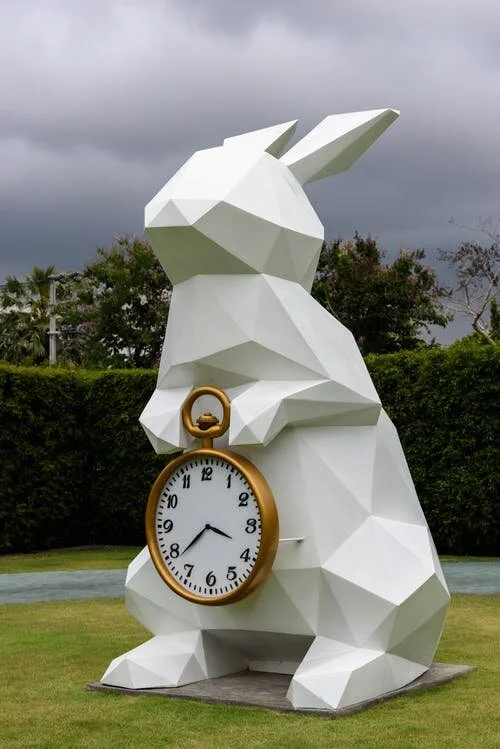I woke up yesterday morning and dressed like a writer. At 8:15 I envisioned myself at the coffee shop working on the family’s calendar while waiting for the library to open at 9. Rather, I woke Liam up at 8:20 to prepare for virtual school. Then at 8:30 I again opened his bedroom door and supervised the four-foot commute from that warm cozy bed to the lamp-lit desk. I flicked on the overhead light as I wished him a good morning and closed the door behind me. Will has an AP test at 2:00 this afternoon, so he didn’t need to wake up for classes this morning.
At 9:15 I felt late as I wasn’t at my desk. I set up my computer in the office. My desk faces the window. I watched leaves on the red acer and the green maple fluttering about—and then decided to go for a walk around the yard to see how the flowers and weeds were doing. The flowers I transplanted before yesterday’s rain look happy; the two buckets of weeds I pulled make me happy.
Finally, at 10:30 I’m sitting at the computer. I wasn’t outside for an hour and fifteen minutes; yet I’m not sure where that time went. I open the window a crack to simulate the cool air in the quiet room at the library; its briskness keeps me alert.
Since I last wrote – over two weeks ago – I’ve been living much like an Iowa farmer or a buoy setter in Gloucester, Massachusetts. Matching the cadence of the outdoors. If it’s sunny, I go outside and dig up weeds or break up and reset perennials. With all the rain we have had, the ground is soft and inviting to this kind of work. This spring, my goal is not to pluck a weed at the ground level and move on, having simply given the thing a trim and the resolve to grow back stronger this summer or next spring. No, I have the spade and trowel out. With a plunge of the spade and a teasing upward of the dirt, my trained eye watches for that depth at which the dandelion’s root end is loosened and the plant moves upward a bit, allowing the whole root to be extracted without breaking. So satisfying.
My real glory has been in the front yard where I’ve been reeling in a crazy sun flower that gets over five-foot high. It’s incredibly invasive and is supposed to stay in the confines of the 4’ x 8’ flower garden at the corner of the house; of course, the plant isn’t aware of that border. It has mutated—not the grammatically correct word, but one conveys the feeling of this sly plant—and popped up in all flower gardens at the front of the house. In the past, I pull these with the intention of stopping their growth for the season while ignoring the truth that they will return.
I just downloaded a plant identifying app because calling this plant a sunflower evokes that big, round-faced sunflower in my mind. And this isn’t that. This plant has a tall thin stem, and at the top it bursts into multiple small bright yellow flowers in late summer. It’s like a grand finale firework display to mark the end of the growing season. I discover that it’s a Jerusalem artichoke which is a species of Sunflowers. According to the PictureThis plant identifying app, it’s also known as Earth apple, Canada potato, Sunroot, Sunchoke, and Sunflower artichoke. And, the tuber is edible!
Mandrake drawing from Wikipedia: supposedly drawn in 1583 by Rembert Dodoens.
Pulling one of these Jerusalem artichoke sunflowers is a tricky endeavor. As I maneuver a root from the ground, I fall into Harry Potter’s Herbology class at Hogwart’s when Professor Sprout’s class is repotting mandrakes. Author JK Rowling personified the mandrake root, bringing to life years of folklore over the plant. The fabled shrieking of the mandrake even made it into Shakespeare’s Romeo and Juliet as Juliet mulls over the sights and sounds of the vault of death: “And shrieks like mandrakes' torn out of the earth…” Much like shapes in fluffy cumulus clouds, mandrake roots lend themselves to the same active imaginations with the shape of a human form in the root.
My sunflower roots do not resemble the human figure and they do not scream when I pull them out of the ground. But their roots are different than other weeds and flowers I pull: a few inches down into the earth, the root bends at a 90-degree angle and grows sideways into the soil. This means on the first spade slice I have a one-in-four chance of slicing through the root depending on whether I dig on the north, south, east, or west side of it. As I’m thinning whole areas, once the earth is opened on the first dig, I slice fewer roots.
Searching for sunflower roots in this wet, soft spring soil connects me to warm dirt memories: digging for night crawlers with my granddad to go fishing and digging up potatoes in late summer with Mom. Dig, sift, and then… prize! Like counting rings on a fallen tree to see how old it is, the length of the skinny-carrot root points to the age of the plant. As they are all seedlings right now, the green leafy above-ground bits are only two or three inches tall. However, upon excavation one root might be two inches long and another eight inches long. In my dedication to accurate and effective removal this year, I know better than to tug at any root that doesn’t freely give; some plants take two spades to loosen the root entirely. To snap a root only forces its energies back into the serious business of underground stabilization, never mind a five-foot leafy stem decorated with sprightly waving yellow flowers come late August. It will come back topside next year—with perhaps a two-inch longer root.
These flowers growing outside their designated spot do not have tubers yet. I imagine if I turned a spade in the middle of the bed, where I encourage them to grow, bulbous tubes would be forming on the horizontal roots. And they grow so tightly together, I imagine that root system is like an underground army thoroughly woven together.
Merriam’s definition of root:
The usually underground part of a seed plant body that originates usually from the hypocotyl, functions as an organ of absorption, aeration, and food storage or as a means of anchorage and support, and differs from a stem especially in lacking nodes, buds, and leaves.
Origins or sources.
Underlying support.
The essential core.
Let’s assume we have a root system that reaches deep and makes unexpected turns. That what looks like separation is only at the surface; that the weaving of big bulbous tubers is tightening every day. That a broken stem only means a strengthening of the invisible anchors at work beneath the surface.


